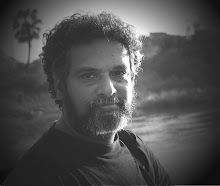Desh parva ends with Ghasiram Kotwal by Rajinder Nath
Desh Parva, the festival of Performing arts of India comes to end with the performance of Ghasiram Kotwal directed by Rajiv Nadh.The repeat show of Ashish Vidyarthi is the other attraction of the day. The details about the program on 13th October is as:
- Kul Varnika : 11:00 am – 1:00 pm Meghdoot III (Entry ticket)
1.Ashish Vidyarthi:

Preethi Athrye:
Her presentation is based on a poem of D’Lo, a Sri Lankan political theatre artist, writer and director. Apart from being a comedian and music producer, D’Lo loves to make people laugh and think --- and that in no particular order.
- Nritya Rupa: 5.30 pm Meghdoot I (Entry free)
BHARATNATAYAM: Artists: Kanaka Shrinivasan’s group Presented by Nrithyaranjani

Bharatanatyam is presented here by disciples of Kanaka Srinivasan, a leading Bharatanatyam dancer based in Delhi. Kanaka Srinivasan is the recipient of honours including the Sangeet Natak Akademi Award.
KATHAK: Presented by Kathak Kendra of Sangeet Natak Akademi

Kathak's thematic content today straddles various worlds, even though the lore of Krishna still has a special place in its repertoire. Kathak is characterized stylistically by its footwork and pirouettes, and is pre-eminently a dance of rhythm-play. The music of traditional Kathak consists of the Thumri and other lyrical song-forms, and the essential musical instruments are the Tabla, Pakhawaj, and Sarangi.
Kathak dance is presented in the festival by Kathak Kendra, New Delhi, a constituent unit of Sangeet Natak Akademi. It is a leading institution in the teaching of Kathak dance.
- Natya Darshan : 6.30 pm Shri Ram Centre Auditorium (Entry ticket)
GHASIRAM KOTWAL (Hindi)
Direction: Rajinder Nath
Presented by National School of Drama( New Delhi)
Act One
After Ganesh Vandana, the Sutradhar and the Chorus dressed as Brahmins describe the degenerate condition of the society during the rule of the Peshwa chieftain Nana Phadnavis.
The Brahmins arrive at the Kotha of Gulabi Bai where Nana sprains his foot while dancing with Gulabi Bai. Gulabi Bai’s Kanauji Brahmin servant Ghasiram saves him from falling on the ground. Nana is highly pleased and presents him with a necklace. However, Gulabi Bai and the gangsters of the Kotha forcibly snatch the necklace from Ghasiram, and the Pune Brahmins conspire to declare Ghasiram a thief. He is publicly humiliated and beaten up by the police, with the result that he is angered and lusts for revenge. Ghasiram uses his beautiful daughter, who is forced to submit to Nana’s desire in order to secure for her father the office of Kotwal of Pune. Finally, Ghasiram becomes the Kotwal. For Nana, it is nothing but a cold political move.
Act Two

The play is directed by Rajinder Nath, and presented by the National School of Drama Repertory Company, New Delhi.



0 Comments:
Post a Comment
Subscribe to Post Comments [Atom]
<< Home